Ground Reports
DMK's Fortress Chennai Is Slowly Becoming BJP’s Third Stronghold In Tamil Nadu After Coimbatore And Kanyakumari
S Rajesh
Mar 11, 2025, 10:06 PM | Updated Sep 01, 2025, 12:16 PM IST
Save & read from anywhere!
Bookmark stories for easy access on any device or the Swarajya app.
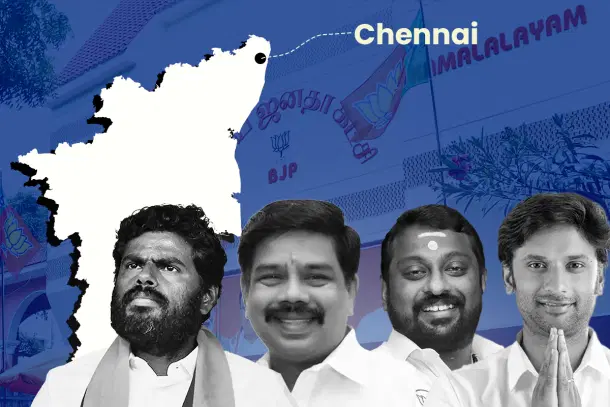
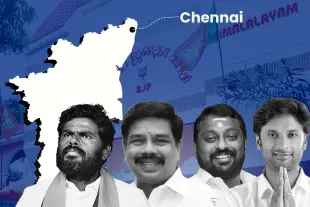
The 2024 Lok Sabha elections saw a paradigm shift in Tamil Nadu. The Bharatiya Janata Party (BJP), contesting without an alliance with the All India Anna Dravida Munnetra Kazhagam (AIADMK), more than tripled its vote share to 11 per cent.
While the BJP could not win any seat in the state, it succeeded in pushing the candidate put up by the AIADMK or its alliance partners to the third position in several constituencies. The vote share of some of them were reduced to a level that they had to lose their deposits.
Two such seats were in Chennai city, i.e. South Chennai and Chennai Central.
And contrary to popular belief it is not as if these constituencies are dominated by Brahmins, who have historically been considered as the major support group for the party. These constituencies have a large population of voters from the Scheduled Castes (SC) groups and the OBCs, which suggests that the BJP’s appeal is going beyond its conventional voter base.
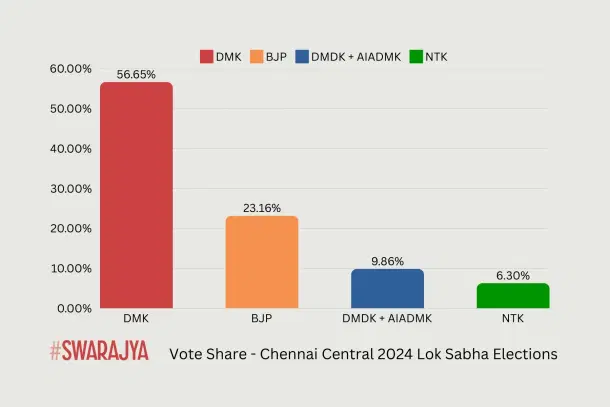
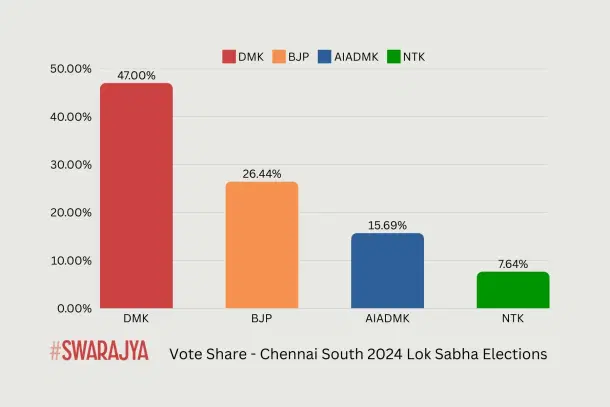
Chennai: BJP’s New Growth Centre?
If one has a look at the numbers, it clearly shows that Chennai is emerging as the party’s third major base in Tamil Nadu after Coimbatore and Kanyakumari.
What makes the state capital important to the party’s growth plans is the large number of assembly seats located in it. The core city area comprises three Lok Sabha constituencies—South Chennai, Chennai Central, and North Chennai, which together have 18 Assembly segments. Additionally, parts of the Tiruvallur and Sriperumbudur constituencies fall within the city’s periphery. Including them, the number of seats goes up to 22.
Of these 22 seats, the BJP secured a vote share of more than 20 per cent in 12 seats. Amongst these, two seats—T Nagar and Velachery in Chennai South, saw the party’s vote share cross 30 per cent.
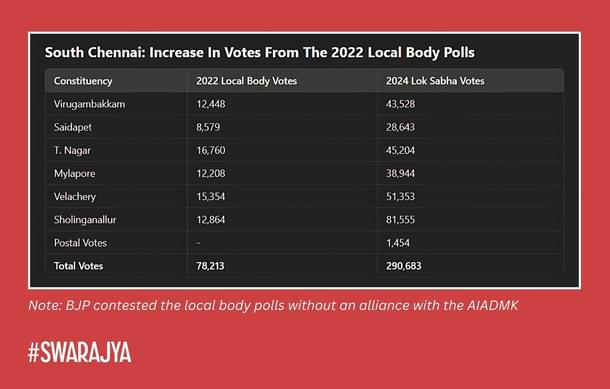
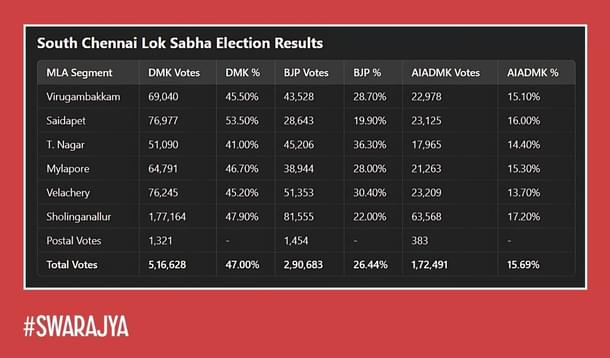
The achievement in Chennai is also significant because the city has always been favourable to the DMK. Following its first major victory in the 1957 corporation elections, the DMK has almost always held on to Chennai even when the AIADMK had come to power in the state.
Needless to say, this transformation for the BJP would not have been possible without putting in a lot of effort. But how did it happen? What are some of the things that the Chennai unit of the Tamil Nadu BJP do to achieve this and how is that momentum shaping the strategy for the 2026 Assembly elections?
While political commentators often put it down to a generally higher anti-incumbency and educated population, is there something else in the state capital that is not there in the rest of Tamil Nadu, which is making it amenable to the BJP?
We examine all of this and more in this ground report from Chennai.
Stress On Booth Level Strategies
One of the major criticisms about the BJP in Tamil Nadu is that it is more of a social media-based party that does not have the requisite strength on the ground. Any discussion about the party’s prospects ends with a common refrain: 'the party has to work on its booth level organisation if it wants to come to power'.
Leaders in Chennai BJP say that they are aware of this and have been concentrating on the same.
Pasupathy, the organising secretary of the party’s Chennai Zone, said, “We pay close attention to booth level work. Each booth committee has 12 members and as of now we have completely filled about 50-60 per cent of them. In the remaining booths, we have a lesser number of members. Soon, all of them will be operating at full strength.”
Acknowledging the same, S G Suryah, a state secretary and spokesperson of the party said that it had become fashionable to make that point in debates and that in Chennai, the party has actually done well.
“There are a total of 4,698 booths in the 22 MLA constituencies. Of this we led in 590 booths. The AIADMK, which has had ministers, MPs and MLAs from here, led only in 13 booths.”
The “Mera Booth Sabse Majboot” Or “Enathu Booth Valimayana Booth” Initiative
To understand what booth level work entails in the context of Chennai, this writer spoke with a number of ground level workers and lower rung leaders of the BJP in the city.
“Whichever election it may be, our first target is to win the booth for our party. It's a matter of pride for any worker and that is why we have an initiative called Enathu Booth Valimayana Booth (my booth is the strongest)”, said M Kumaresan, a travel operator and a party veteran from the Mylapore assembly segment.
Speaking about the work done for the 2024 elections, he said, “Our team’s door to door work started about 6 months before the elections as we were tasked with inviting people to the inauguration of the Ram Mandir in Ayodhya. There are many karsevaks in Mylapore, most of whom are senior citizens. We gave them the sacred akshata and an invitation to the ceremony. For them, it was an overwhelming moment as they had waited all their life to see this happen.”
“From then on we started our core election related work. We went through the electoral roll, checked for updates, got new voters registered and got the names of those who had died or shifted, removed. While this may sound like routine work, it is important because not doing this is what allows bogus votes.
“Bogus votes happen because of connivance of the Dravidian parties, i.e. they both agree to look the other way, when either of them bring in such voters.”
Asked as to how it happens even when there are so many polling officials, he said, “They are paid off. And also because the photos in voter cards are often old and in black and white, polling officials rely on the party agents’ approval after they read out the name of the voter. Only if the agent of any party objects, do they undertake deeper scrutiny. That is why it is important to have trained BJP people in the booths to spot such cases.”
Home Voting–A Once Neglected Area That Is Giving The Party Rich Dividends
Continuing on the topic of malpractices in voting, Subhash, an IT professional from Mylapore, said, “Similar things happen when it comes to voters aged above 85 and those with disabilities. Election officials, accompanied by party agents, go to their homes to get their votes.
“These voters often do not have clear vision or are not aware of the symbols and procedures. Taking advantage of their weakness, these agents get them to vote for their party.
“We were not very active in this space earlier. But now that we are, we are able to get a grip on this. We once went to the house and found the voter had passed away. If we were not there, who knows, the DMK would have got the vote in their name.”
“Our hard work paid off and if you see in south Chennai, our candidate, Tamilisai Soundararjan won in postal votes, (which includes these votes and those in services).”
A BJP member who did not wish to be named said that not having enough booth level workers is a disadvantage when it comes to tackling malpractices. “I’ll be frank and tell you this. We sometimes hire people from other parties to sit as booth agents for us. The problem with them is that their loyalties are not guaranteed. They can be bought off by our opponents and thus look the other way when bogus voting happens. If it is our party man or an RSS man in the booth, we can be sure.”
What Makes A Good Booth Agent
“A good booth agent is one who has command over the entire list of 800-1200 voters. He should ideally know most of them by face. This is why it is important for booth committees to be in place much before the elections, so that they have enough time to know the people and interact with them.
“That way he or she would be able to object to bogus votes easily and also know those who all have not voted. In case they are BJP supporters, we can urge them to come and cast their votes,” said Seetharam, who accompanied Kumaresan and Subhash.
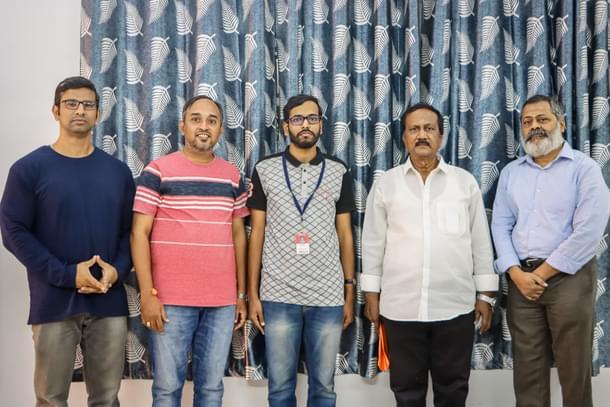
Putting More Effort In Booths That Have Higher ROI
Instead of spreading themselves too thin, Kumaresan said the party is taking an approach of concentrating more on the booths where there is the maximum scope of growth.
“It is the booths where we are in second or third place that we have to concentrate our efforts on. The idea is to improve our position to one better in the next election, i.e. focus on winning the second place booths and becoming the runner-up in booths where we had previously finished third.”
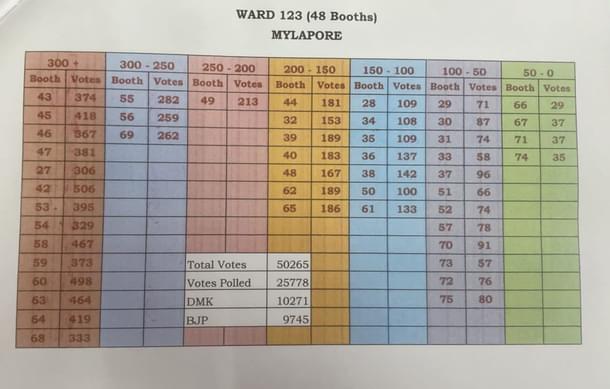
Targeting Slum Voters
Like many urban areas, Chennai too faces the problem of low voter turnout, with figures averaging between 50-60 per cent.
But a deeper examination would show that this low turnout is not uniform. It is mostly the educated, rich and senior citizens who do not come to the polling booths to vote. Economically poorer sections, especially those who live in the slums, turn out in very large numbers, with their turnout often going upwards of 85 per cent.
What this means is that their impact on deciding the representative for the constituency is higher and that makes winning their support all the more crucial. Further, their votes are in large numbers and concentrated in relatively fewer booths.
One such Assembly constituency where slum voters are in high numbers is Saidapet. It has been a stronghold of the DMK and has seen many of the party’s stalwarts being elected from there.
According to K V Kandan, who leads the BJP’s local union for unorganised labour, the DMK maintains a grip over the area by distributing some or the other items throughout the year.
“They will not go and give in each house but they will organise programmes from time to time on occasions such as festivals or anniversaries and ensure that sweets, sarees, crackers etc reach almost everyone in the locality. The freebies are constant. And on the day before the election, they again receive money.”
Nodding his head in agreement, Emperumal Arumugam, a leader from the Thoraipakkam mandal said, “All of this is money looted from the people. They extort people in richer areas for bribes when they want water or electricity connections and then use that money in the poorer areas.
“On one side of Old Mahabalipuram Road, there are people who are well-off and on the other side, there are poorer people. So, the model is simple— ‘fleece here’, ‘spend there’ and win elections using money because the poor are more in number.”
BJP’s Work In The Slums Has Made A Dent In DMK Votes
“We are doing well there in spite of these challenges,” said Suryah, who is also the prabhari for the party’s Chennai East district. Earlier we were getting two out of 100 votes, now we are getting about 20-25 out of 100. The trend is reassuring.”
“In the slum areas we have been particularly doing intense campaigns, strengthening the cadre base and promoting schemes of the central government.
“Through a foundation run by me and my associates, I have got toilets constructed for some of Chennai’s poorest in Semmanchery. In Kannagi Nagar, we have assisted a Silambam artist by giving him funds to purchase equipment that would help him train more children in the area. These students have gone on to participate in national level competitions like Khelo India.
“We have also helped children cover their education expenses for school and college. People are recognising these efforts. Kannagi Nagar is an area that has not had a good name in the past and people of the area are often looked down upon. Our efforts are making a difference."
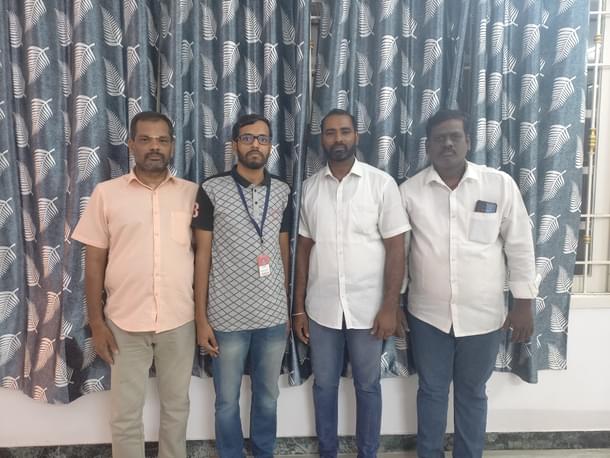
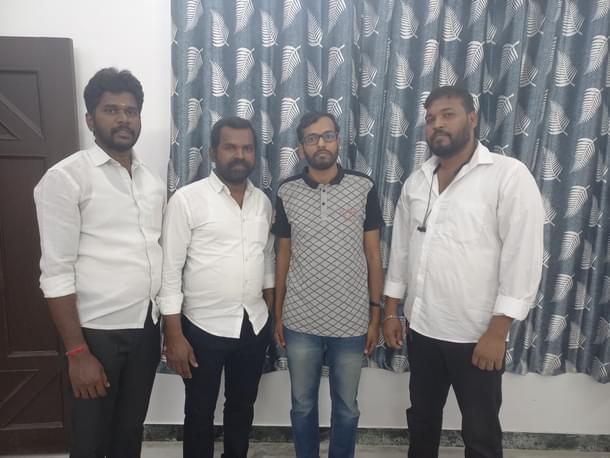
Relief Work During Floods Was Recognised
In December 2023, Chennai was affected by floods due to cyclone Michaung. Many people had to be rescued from their homes and even those who could stay were in a lot of difficulty because they would have to wade through water to go outside. Power supply was not restored for days.
“Those were the toughest days of our lives after the 2015 floods,” said Arumugam. “But we still put together whatever we could and helped people with their immediate needs such as groceries, bedsheets and cooked food. The good work we did during that time was recognised by people and in the 2024 elections, the BJP, which had less than 100 votes earlier in my ward, secured 220 votes. The AIADMK secured a mere 32 votes.”
“These are the kind of instances that give us hope that not everyone is swayed by money.”
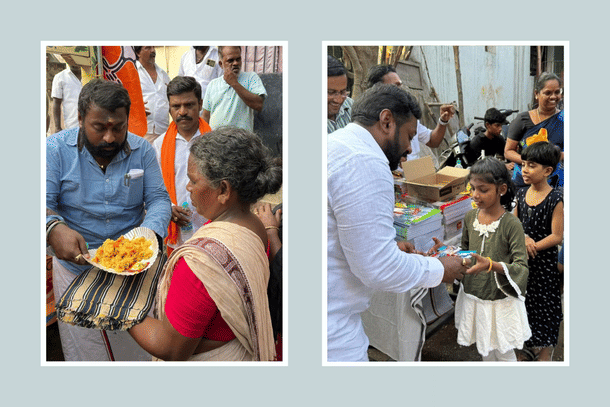
Adding to Arumugam’s point, Suryah said, “A similar case can be made out in Velachery constituency, which was one of the worst affected. The common man appreciated our efforts. In the 2022 local body polls we had secured around 15,000 votes. That went up to over 51000 in the 2024 Lok Sabha elections, which is in a span of just two years. Out of 261 booths in the seat, we won 80. The AIADMK did not win a single booth.”
Actively Taking On Disinformation
G N Balakrishnan, an OBC morcha leader from Velachery said that it is important to keep informing people of the central government’s contribution in their lives as the DMK government in the state is an expert in putting its ‘sticker’ on central schemes.
“For example, while there are photos of Chief Minister M K Stalin, we do not have a photo of Prime Minister Narendra Modi in ration shops. This makes people think that all of the rice they are receiving is from the state government.”
He added that one of the things he does is playing the Mann Ki Baat at full volume outside his home. “Listening to it ourselves is not enough, it is important to make the general public aware.”
High Visibility Politics
During this writer’s stay in Chennai, he got the opportunity to attend a budget-explanation programme organised by the BJP in Thiruvanmiyur.
What struck this writer was the elaborate arrangements that resembled the kind made during state president K Annamalai’s En Mann En Makkal padayatra. Hoardings and banners were erected for half a kilometre leading to the venue and there were large cutouts and illuminations.
It was not something one would expect for what could be considered one of the party’s routine programmes that happen every year.
A state committee member of the party, who did not wish to be named, said that this was a result of the increased membership of the party. “With more people contributing, we are able to organise better programmes.”
The political head of the party’s Chennai zone, Karu Nagarajan put it down to the nature of politics in the state. “These are also part of the Dravida model. To combat them effectively, we have to beat them at their game.”
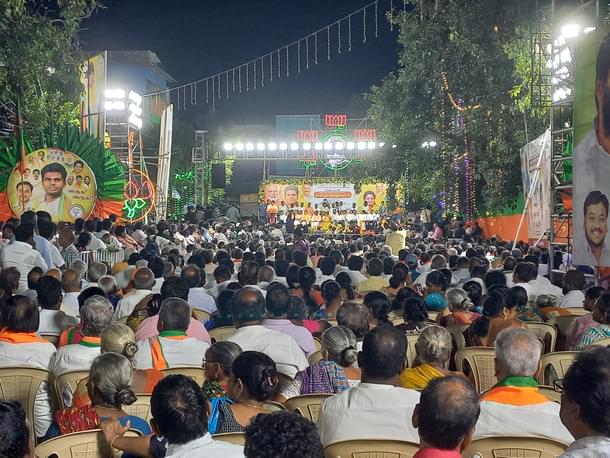
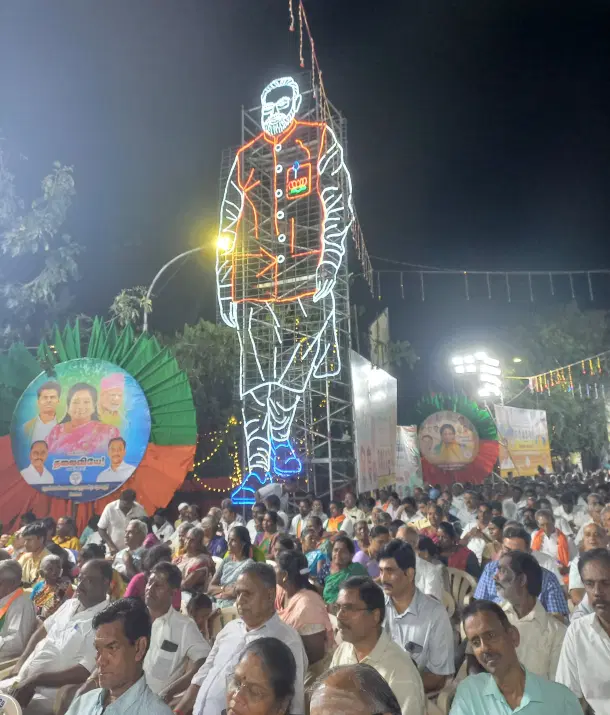
Standing By The Cadre
According to Kumaresan, the average BJP worker is highly motivated and unlike other parties, they do not expect much in return. “Other party cadres will not do anything without getting money. At a time when they are expecting biriyani, our members would be content with tea and some biscuits.”
“Very often our cadres are poor and do not even have money to organise small events. While people like me may be able to spend money from our pockets for the party, there are others who cannot do that. I remember one man asking his leader if he could help him with Rs 80 to put up a poster of Deen Dayal Upadhyaya on his birthday.”
Others too told this writer that they expected more financial support from the party.
On issues like the response from the party when workers get harassed or arrested for political reasons, Vinoj Selvam, the candidate from Chennai Central said that the situation is much better than before. “We are much more capable now. Our legal wing is headed by R C Paul Kanagaraj, who has been the president of the Madras High Court advocates association.”
“I’ll give you a recent example. Our party cadre were picked up by the police in Kancheepuram on the flimsy grounds of not removing BJP flags after the completion of the programme. We soon mobilised around 200-300 party men and ensured that they were released.”
He added: “Today, when a worker is in trouble, he knows that his mandal president and district president would be there to help.”
Tapping Into The Feeling That Chennai Has Been Left Behind
According to Selvam, the party has been appealing to the conscious urban citizen by tapping into the pride that people have had about Chennai.
“Somewhere the pride of being from Chennai has been lost to Bangalore and Hyderabad. Other cities have moved on much faster. Chennai has become a stagnant city–there is nothing to look forward to after work. DMK has failed to do what is needed for the city. We need to make better use of our natural gifts like the long coastline, and improve our infrastructure. Our party is promising a better lifestyle and overall development.
“What is also unfortunate is that the current MP from the DMK, Dayanidhi Maran, is not speaking about the issues he should be addressing. He is quite detached from the reality on the ground and people are seeing it. To prove the point (with some humour) I once posted a picture of myself in a Chennai Super Kings jersey, saying I can do it but Dayanidhi cannot do it (as his family is the owner of Sunrisers Hyderabad).
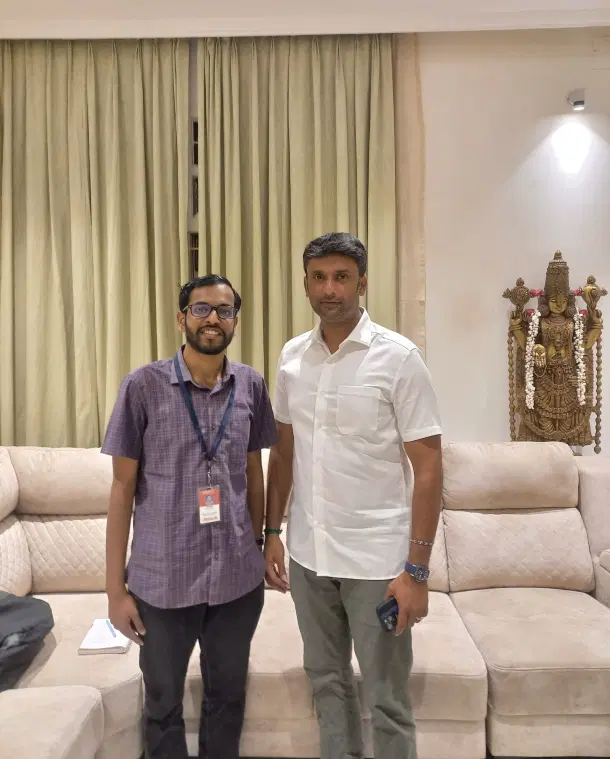
What Has The Party Done At An Organisational Level In Chennai
Behind the relative and recent success of the party is a well-oiled organisational machinery. Similar to Delhi, Chennai serves as the base for two units—the city unit as well as the state unit. This has led to the presence of a large number of leaders, right from state president Annamalai, to the heads of various cells and morchas of the party. While such a scenario could lead to too many cooks spoiling the broth, the party has been careful not to allow that to happen.
The city has been categorised as one of the party’s eight zones, with Karu Nagarajan and Pasupathy as the two zonal incharges. While Nagarajan looks after political matters, Pasupathy, who is from the Rashtriya Swayamsevak Sangh (RSS), looks after organisational matters. They act as the interface between the state leadership and the city unit.
Explaining the setup for Chennai, Pasupathy said, “We have divided the zone into seven districts. Each district has three assembly constituencies (with the exception of south Chennai) and is looked after by a district president. A state level office bearer acts as the prabhari or in-charge.
Districts are divided into mandals headed by a mandal president. There are 99 mandals in total. They are mostly composed of a few municipal wards. Some of them have village panchayats under them. Below that are the booths.”
For better coordination, all heads of cells and morchas at the district level are answerable to the district president. There are regular review meetings at each level. While some are held every 15 days, others are held once a month. The broader Sangh Parivar is also kept in the loop through quarterly meetings.
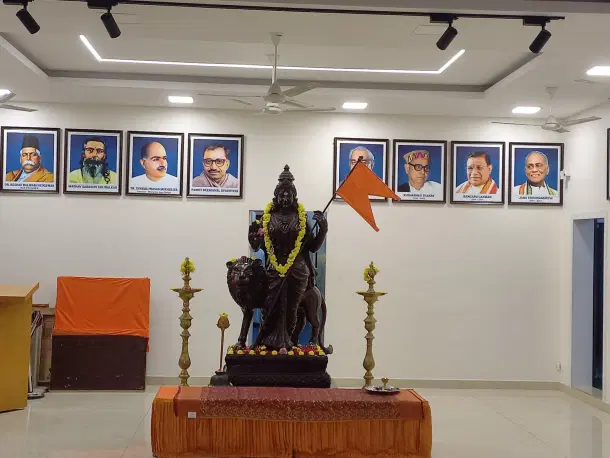
North Chennai Remains A Weak Area For The Party
While the party’s performance in south Chennai and central Chennai has been good, the same cannot be said of north Chennai, where its candidate secured a vote share of only about 12.5 per cent. The AIADMK finished second in this constituency. So, what is it that ails the party here?
According to Pasupathy, muscle power rules the roost here, making it difficult for the BJP to compete.
“North Chennai is an economically weaker area. People are mostly living on daily wage work. So the DMK is able to keep them under its thumb through money and coercion. They threaten them by saying that if you join the BJP, we will ensure you do not benefit from state government schemes and also cut water and electricity connections. In such circumstances, it is difficult to bring in people to the party. They have to fill their stomachs first.”
Winning Support From Labharthis–The Party’s Strategy in North Chennai
The only way to make inroads there is to take central government schemes to more and more people, according to Nagarajan. “We have to cultivate beneficiaries. Once they see that they are getting something, they start voting.”
“The best part about the Modi government’s schemes is that the benefits come directly to the bank account,” he added.
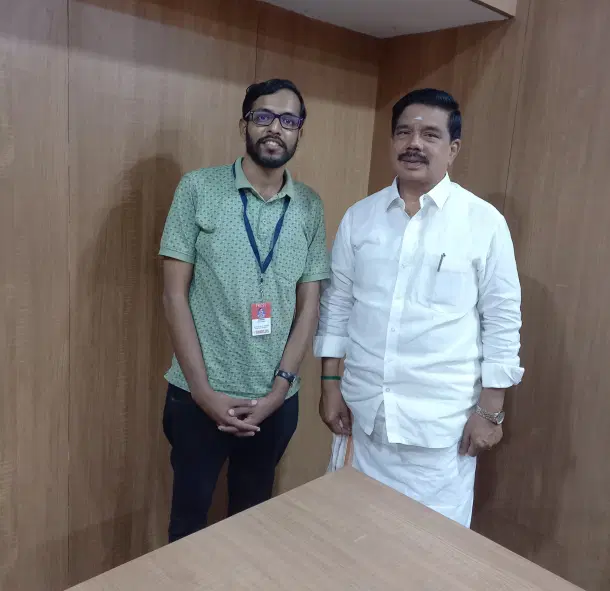
Good Work Done But Path Forward Is Not Going To Be Easy
While the party made a lot of progress in the 2024 elections, there remain a few obstacles.
First, the Chennai unit is not immune to intra-party rivalry. Workers told this writer that there are occasions when people who get elected to a certain post are not formally appointed because some leaders want those close to them to be given those positions.
Second is the perception that the BJP is not an important player in the assembly elections. “People think we will not come to power, so why vote for us. This feeling is pervasive to the extent that people who support us in the Lok Sabha elections change their choice when it comes to choosing their MLAs,” said a leader who did not wish to be identified.
Thirdly, the focus on cultivating a labharthi class depends a lot on technology. Not all party workers are digitally savvy and that hampers the implementation of central government schemes.
This issue was flagged by Kandan, who said that specialised teams have to be made to handle this from end to end. Pointing at his team members, he said, “We may be good campaigners but we are not necessarily the best when it comes to enrolling people for various yojanas. From our end, we do what we can—we have made a union for auto drivers, construction workers and even a few self help groups, who now benefit from various schemes but all of this needs a more focused approach.”
The fourth is that unlike in say Kerala or Karnataka, the RSS is not very strong in numbers and this leads to the party losing out on the services of a dedicated cadre. A BJP leader from Sholinganallur who spoke with this writer said, “While you may have 10 BJP members in a ward, the corresponding figure for the RSS and other Sangh Parivar organisations would be one or two.”
He wanted the organisation to undertake more visible work. “They like to work silently. But the problem is that if you work under the name of so and so seva organisation, it is difficult for people to remember and vote for the lotus symbol.
The last and final challenge, which everyone in the party mentioned, was the issue of people voting for those who give them money. “If the cash given on the night before elections is going to determine the choice, no amount of hard work will suffice. A shift in the mindset is of utmost necessity.”
The party thus has its task cut out. But what cannot be denied is that the BJP through the efforts of its city unit has made Chennai the place to watch out for in the 2026 elections.
S Rajesh is Staff Writer at Swarajya. He tweets @rajesh_srn.




